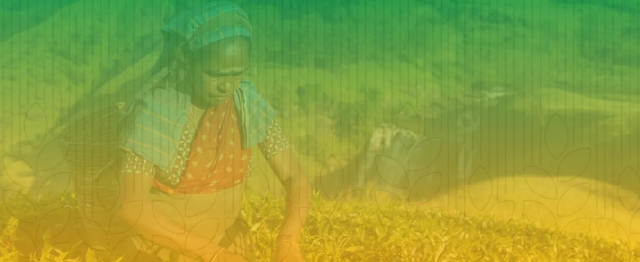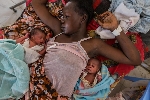Food Security Update | World Bank response to rising food insecurity
 A farmer
A farmer
Latest Update – May 8, 2023
Domestic food price inflation remains high around the world. Information from the latest month between January 2023 and April 2023 for which food price inflation data are available shows high inflation in almost all low- and middle-income countries, with inflation levels greater than 5% in 64.7% of low-income countries, 83.7% of lower-middle-income countries, and 89% of upper-middle-income countries and many experiencing double-digit inflation. In addition, 81.8% of high-income countries are experiencing high food price inflation. The most-affected countries are in Africa, North America, Latin America, South Asia, Europe, and Central Asia.
The agricultural, cereal, and export price indices closed 8%, 9% and, 11% lower, respectively, than two weeks ago. The decrease in maize and wheat prices (14% and 11% lower, respectively, than two weeks ago) drove the decrease in the cereal price index. Rice prices remained relatively unchanged. The decrease in coffee prices, which were 12% lower than two weeks ago, was the primary driver of the decrease in the export price index. On a year-on-year basis, maize and wheat prices are 17% and 38% lower, respectively, while rice prices are 15% higher. Maize prices are 13% higher than in January 2021, while wheat and rice prices are 6% and 4% lower, respectively (See “pink sheet” data for agricultural commodity and food commodity prices indices, updated monthly.)
The 2023 Global Report on Food Crises, released on May 3, indicates that 258 million people in 58 countries or territories faced crisis or worse levels of acute food insecurity in 2022. In seven countries (Afghanistan, Burkina Faso, Haiti, Nigeria, Somalia, South Sudan, Yemen), some affected populations faced Catastrophic levels of food insecurity, which indicates the threat of famine and extremely critical levels of malnutrition in several areas of the countries, marking the most countries facing such extreme levels of food and nutrition insecurity in the report’s history. The number of people experiencing crisis or worse acute food insecurity is the highest on record since the GRFC started reporting these data in 2017, with 2022 marking the fourth consecutive year of increases in the number of acutely food-insecure people.
In the April 2023 edition of the Global Commodity Market Outlook, the World Bank indicated that, overall, commodity prices are expected to be 21% lower in 2023 than in 2022. Specifically, energy prices are expected to decline 26%, Brent crude oil prices 16%, agricultural prices 7%, food prices 8%, and fertilizer prices 37%. In the first quarter of 2023, global commodity prices fell 14% and, by the end of March, were approximately 30% below their historic June 2022 peak. Despite these decreases, fertilizer and food price indexes remain well above pre-pandemic levels.
The International Food Policy Research Institute (IFPRI) 2023 Global Food Policy Report: Rethinking Food Crisis Responses provides evidence-based policy recommendations for governments, donors, and nongovernmental organizations working to reduce short- and long-term impacts of food crises. Drawing on research from IFPRI and other CGIAR centers, the report stresses the need for well-coordinated early warning systems and anticipatory action frameworks to prepare and organize responses before a crisis. The report also calls on governments to maintain supportive business environments for agrifood value chains, build adaptive social protection programs that integrate gender and climate goals, repurpose agricultural support funds, and better leverage private sector funds for long-term resilience.
Following Russia’s invasion of Ukraine, trade-related policies imposed by countries have surged. The global food crisis has been partially made worse by the growing number of food trade restrictions put in place by countries with a goal of increasing domestic supply and reducing prices. As of March 13, 2023, 22 countries have implemented 28 food export bans, and ten have implemented 14 export-limiting measures.
World Bank Action
As part of a comprehensive, global response to the food security crisis, in April 2022 the World Bank announced that it is making up to $30 billion available over a period of 15 months, including $12 billion in new projects. The financing is to scale up short- and long-term responses along four themes to boost food and nutrition security, reduce risks, and strengthen food systems: (i) support producers and consumers, (ii) facilitate increased trade in food and trade inputs, (iii) support vulnerable households, and (iv) invest in sustainable food and nutrition security.
The Bank has achieved its target of making $30 billion commitment for food and nutrition security response. Between April to December 2022, the Bank’s food and nutrition security commitments in new lending have passed the $12 billion mark – with almost half for Africa, which is one of the hardest hit regions by the food crisis. Some examples include:
• The $766 million West Africa Food Systems Resilience Program is working to increase preparedness against food insecurity and improve the resilience of food systems in West Africa. The program is increasing digital advisory services for agriculture and food crisis prevention and management, boosting adaption capacity of agriculture system actors, and investing in regional food market integration and trade to increase food security. An additional $345 million is currently under preparation for Senegal, Sierra Leone and Togo.
• A $150 million grant for the second phase of the Yemen Food Security Response and Resilience Project, which will help address food insecurity, strengthen resilience and protect livelihoods.
• $50 million grant of additional financing for Tajikistan to mitigate food and nutrition insecurity impacts on households and enhance the overall resilience of the agriculture sector.
• A $125 million project in Jordan aims to strengthen the development the agriculture sector by enhancing its climate resilience, increasing competitiveness and inclusion, and ensuring medium- to long-term food security.
• A $300 million project in Bolivia that will contribute to increasing food security, market access and the adoption of climate-smart agricultural practices.
• A $315 million loan to support Chad, Ghana and Sierra Leone to increase their preparedness against food insecurity and to improve the resilience of their food systems.
• A $500 million Emergency Food Security and Resilience Support Project to bolster Egypt's efforts to ensure that poor and vulnerable households have uninterrupted access to bread, help strengthen the country's resilience to food crises, and support to reforms that will help improve nutritional outcomes.
• A $130 million loan for Tunisia, seeking to lessen the impact of the Ukraine war by financing vital soft wheat imports and providing emergency support to cover barley imports for dairy production and seeds for smallholder farmers for the upcoming planting season.
• The $2.3 billion Food Systems Resilience Program for Eastern and Southern Africa, helps countries in Eastern and Southern Africa increase the resilience of the region’s food systems and ability to tackle growing food insecurity. The program will enhance inter-agency food crisis response also boost medium- and long-term efforts for resilient agricultural production, sustainable development of natural resources, expanded market access, and a greater focus on food systems resilience in policymaking.
In May, the World Bank Group and the G7 Presidency co-convened the Global Alliance for Food Security, which aims to catalyze an immediate and concerted response to the unfolding global hunger crisis. The Alliance has developed the publicly accessible Global Food and Nutrition Security Dashboard, which provides timely information for global and local decision-makers to help improve coordination of the policy and financial response to the food crisis.
The heads of the FAO, IMF, World Bank Group, WFP, and WTO released a Third Joint Statement on February 8, 2023. The statement calls to prevent a worsening of the food and nutrition security crisis, further urgent actions are required to (i) rescue hunger hotspots, (ii) facilitate trade, improve the functioning of markets, and enhance the role of the private sector, and (iii) reform and repurpose harmful subsidies with careful targeting and efficiency. Countries should balance short-term urgent interventions with longer-term resilience efforts as they respond to the crisis.
Food Inflation Heat Map
Real Food Inflation Heat Map
Source:
International Monetary Fund, Haver Analytics, and Trading Economics. International Monetary Fund, Haver Analytics, and Trading Economics.
Food inflation for each country is based on the latest month from October to January 2023 for which the food component of the Consumer Price Index (CPI) and overall CPI data are available. Real food inflation is defined as food inflation minus overall inflation.
The boundaries, colors, denominations, and any other information shown on this map do not imply any judgment on the part of the World Bank concerning the legal status of any territory or the endorsement or acceptance of such boundaries.
Source: worldbank.org
Trending Features

Nana Konadu Agyeman-Rawlings, the catalyst for women’s empowerment in Ghana
12:44
British-Ghanaian lawyer Bianca Akweley Clinton marks 20 years at the Bar
19:02
The death of critical thinking and the rise of collective stupidity as an existential threat
08:32
Cybersecurity and Constitutional Order: Why ILAPI calls for redress before Ghana’s Cybersecurity (Amendment) Bill becomes law
23:32
Cedi at 60: What you need to know about Ghana’s legal tender
15:04
From shells to screens: Experience 60 years of the Ghana cedi in augmented reality
10:38
Hair, discipline, and identity: The debate over SHS haircut rules in Ghana
10:07
Tribute to Nana Konadu Agyeman-Rawlings
13:07
Leveraging Analytics to Optimise Ghana’s Energy Grid
12:29
Ending child marriage — Beyond hashtags and promises
11:42




